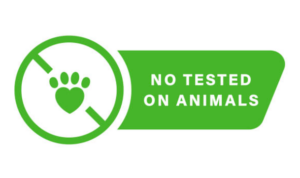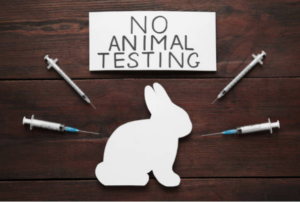Navigating Ambiguities

In the ever-evolving landscape of the beauty industry, the demand for cruelty-free products has surged as consumers become increasingly conscious of ethical considerations. Cruelty-free certifications have become a benchmark for brands striving to demonstrate their commitment to ethical practices. However, beneath the surface of these certifications lie grey areas that raise questions about their true effectiveness. In this blog, we will delve into the complexities of cruelty-free certifications, exploring potential loopholes that challenge the transparency and reliability of these labels.
Cruelty-free certifications aim to assure consumers that a product or brand has not been tested on animals. This commitment to ethical practices aligns with the growing awareness and concern for the well-being of animals used in cosmetic testing. Several organizations, such as PETA (People for the Ethical Treatment of Animals), Leaping Bunny, and Choose Cruelty-Free, offer cruelty-free certifications to brands that meet specific criteria.
The Criteria for Cruelty-Free Certification
- No Animal Testing:
- Brands seeking cruelty-free certification must adhere to a strict policy of refraining from testing their finished products on animals. This prohibition extends to both the product as a whole and its individual ingredients.
- Verification often requires brands to provide evidence that they have not conducted any form of animal testing at any stage of the product development process.
- No Third-Party Testing:
- Beyond their own practices, cruelty-free brands must ensure that neither their finished products nor their individual ingredients are subjected to animal testing by third-party entities.
- Certifying bodies may require documentation and assurances from suppliers and manufacturers to verify that third-party testing is not part of the production process.
- No Animal-Derived Ingredients:
- While not a universal requirement, some cruelty-free certifications extend their criteria to exclude the use of animal-derived ingredients. Brands adhering to these standards commit to a vegan approach, ensuring that their products are entirely free from animal by-products.
- The vegan aspect adds an extra layer to the cruelty-free commitment, resonating with consumers who prioritize both ethical treatment and the exclusion of animal-derived materials.
- Transparent Supply Chain:
- Brands pursuing cruelty-free certification often need to provide comprehensive information about their supply chain. This includes details about ingredient sourcing, manufacturing processes, and the ethical practices followed by suppliers.
- Certifying bodies may conduct thorough audits or request documentation to verify the integrity of the supply chain and ensure that no animal testing is involved.
- Regular Audits and Inspections:
- Maintaining cruelty-free status is an ongoing commitment that requires regular verification. Certifying bodies may conduct periodic audits and inspections to ensure that brands continue to meet the established criteria.
- These audits may include site visits to manufacturing facilities, ingredient suppliers, and other relevant points in the supply chain.
Despite these criteria, the world of cruelty-free certifications is far from black and white. The complexities arise from various factors that create grey areas within the certification process.

The Grey Areas and Potential Loopholes
- Parent Companies Testing on Animals:
- A significant grey area lies in the ownership structure of beauty brands. While a specific brand may proudly display a cruelty-free certification, its parent company might not adhere to the same principles. In this scenario, consumers supporting a cruelty-free brand may inadvertently contribute to animal testing conducted by the brand’s parent company or other subsidiaries.
- Loose Definitions of Cruelty-Free:
- The term “cruelty-free” lacks standardized, universally accepted definitions across the beauty industry. Some brands may interpret this term liberally, leading to varying standards and criteria. Without a clear, consistent definition, brands can market products as “cruelty-free” without adhering to rigorous or transparent criteria.
- Testing in Countries with Animal Testing Requirements:
- Many countries, notably China, still require cosmetics to undergo animal testing before being sold on their markets. This presents a dilemma for brands committed to cruelty-free principles. They must choose between adhering to local regulations, which may involve animal testing, or maintaining a strict cruelty-free stance and forgoing entry into potentially lucrative markets.
- Ingredient Sourcing and Testing:
- Cruelty-free certifications often focus on the final product, neglecting the individual ingredients. Brands may claim cruelty-free status while sourcing ingredients that have undergone animal testing independently. This lack of scrutiny over individual ingredients raises questions about the comprehensive cruelty-free nature of the entire product.
- Grey Areas in Supplier Practices:
- Even when a brand commits to cruelty-free practices, some suppliers in the production chain may still engage in animal testing. The lack of visibility into the practices of every supplier introduces uncertainty about the actual cruelty-free status of a product, as certain components may have undergone testing outside the brand’s control.
- Limited Transparency in Audits:
- While certifying bodies conduct audits to verify a brand’s adherence to cruelty-free standards, the extent of transparency in these processes can vary. Some certifications may not disclose detailed information about their auditing methods, leaving consumers in the dark about the rigor of the assessment and the specific criteria evaluated.
- Inconsistent Standards Among Certifying Bodies:
- Different certifying bodies may have varying criteria for cruelty-free certification, leading to inconsistencies in standards. Some organizations may set higher bars for certification, while others may have more relaxed criteria. This lack of uniformity makes it challenging for consumers to discern the reliability of one certification over another.
- Lack of Regulation and Enforcement:
- Unlike other regulated labels, such as organic or fair trade, cruelty-free certifications are not subject to strict government regulations. The absence of standardized enforcement mechanisms allows brands to self-declare as cruelty-free without rigorous scrutiny. This lack of regulatory oversight contributes to potential loopholes and inconsistencies in the certification process.
- Ambiguous Wording on Packaging:
- Brands may use ambiguous or misleading language on packaging, creating potential loopholes. Terms like “not tested on animals” might imply cruelty-free status, but without certification or clear definitions, consumers may misinterpret these claims.
- Greenwashing and Marketing Tactics:
- Some brands engage in greenwashing, a deceptive practice where they exaggerate or falsely claim to be more environmentally friendly or ethical than they are. This can extend to cruelty-free claims, where brands may use marketing tactics to create an illusion of ethical practices without substantive commitment.

Navigating the Complexities
While the grey areas and potential loopholes in cruelty-free certifications can be disheartening, consumers can take proactive steps to navigate these complexities and make informed choices.
- Research the Brand’s Ownership:
- Investigate the ownership structure of the brands you support. Some cruelty-free brands may be owned by parent companies that engage in animal testing. Look for brands with a transparent ownership structure or those explicitly committed to maintaining cruelty-free principles, regardless of corporate affiliations.
- Verify Certifications and Claims:
- Scrutinize certifications and claims made by brands. Reliable cruelty-free certifications from organizations like PETA, Leaping Bunny, or Choose Cruelty-Free have clear criteria and standards. Check for certification logos on packaging and cross-verify claims by visiting the certifying bodies’ websites.
- Stay Informed About International Regulations:
- Understand the animal testing requirements in countries where a brand operates. Brands selling in regions with mandatory animal testing may communicate their stance on this issue through their website or customer service. Look for brands that actively engage in conversations about regulatory challenges.
- Explore Vegan Brands:
- For a more comprehensive commitment to ethical practices, consider exploring brands that not only adhere to cruelty-free standards but also offer vegan products. Vegan brands abstain from using animal-derived ingredients altogether, providing a more robust ethical approach to beauty.
- Support Transparent Brands:
- Choose brands that demonstrate transparency in their supply chain practices. Those willing to disclose information about their ingredient sourcing, manufacturing processes, and supplier practices are more likely to uphold cruelty-free principles. Transparent brands often share their commitment on their websites or product packaging.
- Advocate for Change:
- Engage with brands on social media, through customer service channels, or by supporting petitions that call for an end to animal testing. Advocate for increased transparency, consistent standards, and the eradication of animal testing in the beauty industry. Brands responsive to consumer concerns are more likely to prioritize ethical practices.
- Educate Yourself on Certification Bodies:
- Familiarize yourself with the standards and transparency levels of different certifying bodies. Some organizations have more rigorous criteria and auditing processes than others. Understanding the reputation and reliability of certifying bodies helps you make informed choices about the credibility of a brand’s cruelty-free claims.
- Look for Brands with Strong Values:
- Brands that are genuinely committed to cruelty-free principles often integrate these values into their mission statements, core values, or brand narratives. Look for brands that not only claim to be cruelty-free but also communicate their dedication to ethical and sustainable practices.
- Consider Cruelty-Free Blogs and Resources:
- Explore cruelty-free beauty blogs, forums, and online communities where consumers share their experiences and insights. These platforms often discuss specific brands, investigate ownership structures, and provide up-to-date information on cruelty-free beauty.
- Check for Annual Updates:
- Cruelty-free certifications may need annual renewal, and brands may undergo recertification processes. Check for updates on certifications to ensure that brands continue to adhere to cruelty-free standards. Certifying bodies often maintain updated lists of certified brands on their websites.

Navigating the grey areas of cruelty-free certifications requires a discerning approach from consumers. By understanding the complexities and potential loopholes within the certification process, individuals can make informed choices that align with their ethical values. Moreover, advocating for increased transparency, consistent standards, and the eradication of animal testing in the beauty industry contributes to the ongoing evolution towards a cruelty-free future. As consumers, we hold the power to shape the beauty landscape by supporting brands that genuinely prioritize the well-being of animals and ethical practices.

